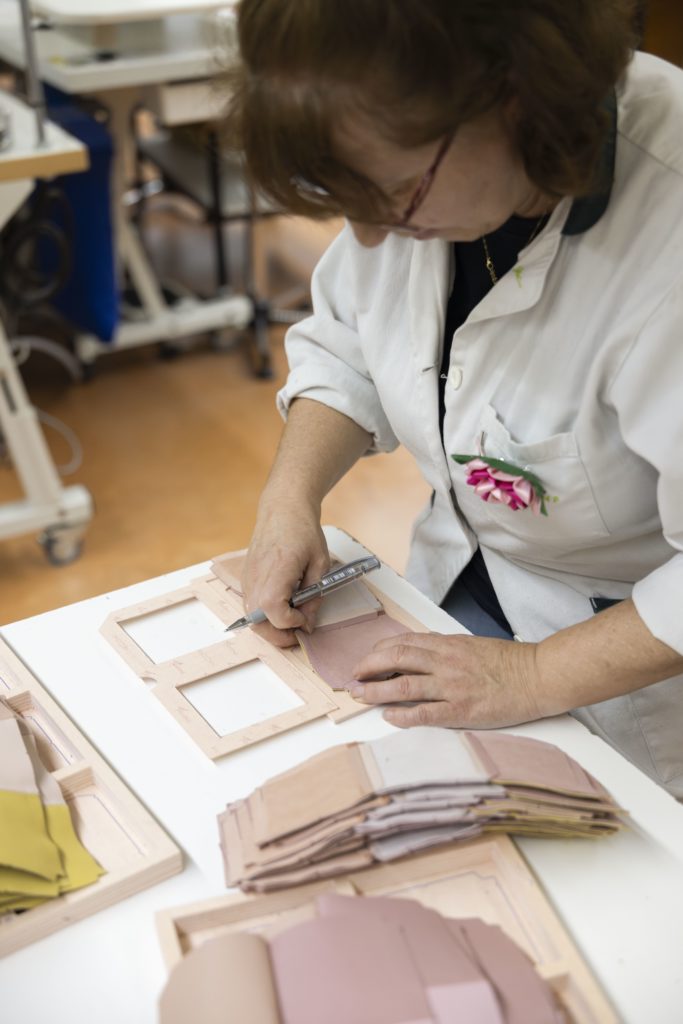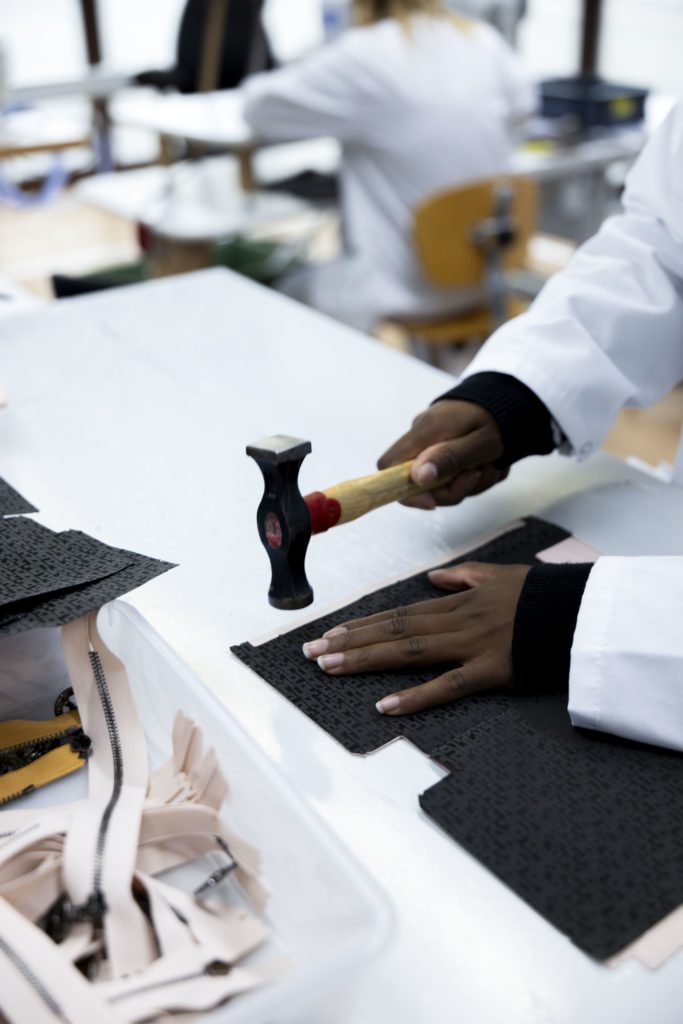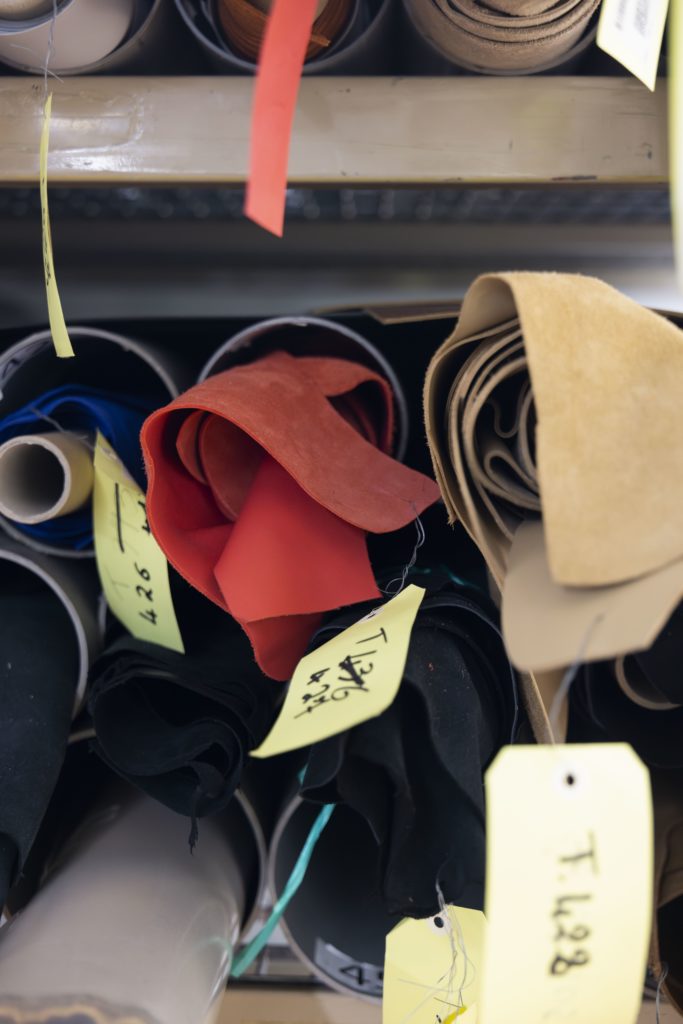
In this age of conglomerates, it is a rare thing for a major fashion brand to remain a family enterprise. But then again, Longchamp has never really subscribed to your usual fashion rules. What started as a maker of leather‐covered pipes in 1948 by Jean Cassegrain has, over the decades, grown into a full‐fledged brand comprising ready‐to‐wear, bags, shoes, and other accessories. In the early 1990s, when luxury was loud and flashy, the brand introduced Le Pliage, a sturdy, minimalist, foldable tote made of nylon that became an instant hit. The tote remains as popular as ever but is now made of recycled nylon—part of the company’s efforts to be more environmentally conscious in recent years.
Related article: Take Flight With Longchamp's Newly Released Le Roseau Bags
Today, those sustainability initiatives are overseen by Adrien Cassegrain, Longchamp’s director of transformation and CSR, and a fourth‐generation member of the family (third‐gen members Sophie Delafontaine and Jean Cassegrain are at the helm of the creative and business sides respectively). Other sustainability programmes include the launch of the Re‐Play range, which utilises deadstock materials that would have otherwise gone to waste. The brand also has a repair workshop that restores almost 60,000 items each year—lovingly extending the life of its products, some of which have been passed down from one generation to the next.
Related article: Kate Barton On Her Futuristic Clothes And How Taking The Path Less Travelled Paid Off

In total, Longchamp operates five workshops in France, allowing it full control over the production process, from the cutting of the leathers to the final assembly. All the tanneries used by the brand are audited by the Leather Working Group, an independent body that certifies social and environmental standards. As of 2023, 79 per cent of the leathers used by the brand are certified “Gold”. Here, Adrien Cassegrain talks to us about his role in shaping the future of the company, and what that future looks like.

Consumers today expect transparency from the brands they buy into. How can fashion brands respond to this in ways that are meaningful?
It used to be that companies could say, “We’re big names, so just trust us”, but it’s not possible to do that anymore. For us, over the years, we’ve built strong tracing capabilities: For each product, we know where the materials come from, we know the suppliers, and we’ve been able to share that with our clients, for a while now, through QR codes on the labels of our products. We want our customers to be able to know where everything has been made; where the leather has been tanned or finished. And I think it has also helped our clients understand the amount of work and effort it takes to transform a piece of leather into a bag.
There are very few big fashion brands that are still family-owned. Why is it important to the family to stay independent, and how does this shape the company culture?
When I was growing up, we would work in our grandmother’s boutique. So for us, it’s really a part of our heritage and who we are as a family. The company is like a family member and that allows us a deeper understanding of what we have to do. The family understands the brand and about building long‐term value, which also means we have to develop a really long‐term vision. I think that’s a real strength, compared to many larger companies that have to provide shareholder value each quarter. Take the QR codes for example. That was a really long‐term project because we had to build the tracing capabilities before doing anything else. It also allows us to take different kinds of risks—creatively, for example.
Can you share a little more about the challenges and opportunities that come from being independent?
I think most of the opportunities are, in some way, kind of challenges and vice versa. We’re different from many other brands, and in our business, that is what most brands try to be—to bring something different and special to the client. But being a company that’s not that large also has its drawbacks in a very competitive market. It’s harder to compete with our peers on the same financial level, but being smaller also forces us to think differently, to find new ways to stand out—whether that’s regarding sustainability, savoir faire, or even communications. We can’t spend millions the way other companies spend on, for example, one social media post. So we have to find new ideas, and I think in the long run, this is a really good thing.
Let's talk more about sustainability. There is the Re-Play range that uses deadstock materials, and the Le Pliage is now made of recycled nylon. What other initiatives has the brand taken to be more sustainable, and what is in the works to move further in that direction?
The Re‐Play range and the recycled materials are part of a very broad initiative to use better materials for all our products. All our leathers are certified by the Leather Working Group. We use recycled fibres wherever we can, like the nylon for the Le Pliage as you mentioned, and silk and cotton for ready‐to‐wear. What we want is to improve the overall quality of all our products so that our clients can benefit from it. And this is really tied to the know‐how that we have. We have the understanding of how the materials work, we have a direct connection with our suppliers, and that makes it possible to develop with them new materials that are better than what came before. With the Le Pliage, for example, it took several years to develop a new fabric so that nothing [in terms of the product] changes. We want to make sure that we don’t compromise quality. The second part of the story is that we offer repairs for all of our products, regardless of the year they’re made. We have repaired pieces that are older than me. It’s a pleasure for us to be able to do that, because it’s not a capability that every brand has. We can do that because we have our own workshops, and we fully understand how our products are made. And it’s nice because we know that people get attached to their bags. They spend a lot of time with their bags, they go on adventures with them, and at some point, it’s normal that the bags get a bit tired. And when that happens, we’re able to give them maybe not a second life, but a new youth, so that the adventure can continue for many more years.



